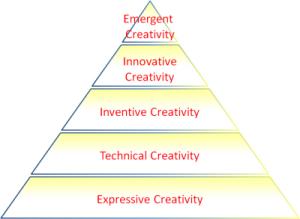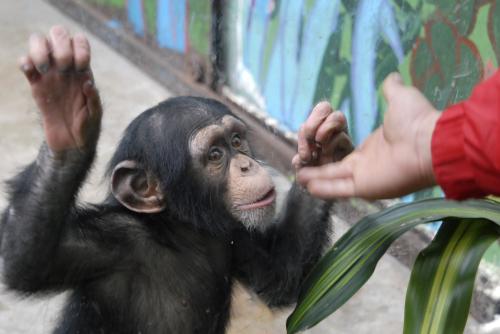Unleashing Engineering Creativity
Creativity. We deem it essential for business and technical success, yet we are often puzzled about how to find it, how to empower our people to exercise it, and how to apply it. Do we need creativity for solving engineering or business problems, designing completely new products, improving existing products, or developing and improving processes? Are we born with creativity, or do we need to develop our creativity skills?
The answer to all of the above questions is a resounding yes. The good news is that we were all born to be creative. The bad news is that our education system (and in particular, our training to become engineers) drives it out of us. Here’s a startling fact: We lose nearly all of our creativity between the time we are about 5 years old and the time we graduate from high school.
If you’re an engineer (as I am), you might disagree with the above. I did the first time I heard about it. The research bears it out, though, and if you want to get a feel for it yourself, try the Torrance Test of Creative Thinking. Think of an empty tin can, and in one minute, list as many uses as you can think of for it without reading any further in this article.

The Torrance Test of Creative Thinking. Give yourself one minute, and list as many possible uses as you can think of for an empty tin can.
After you’ve made your list, count the total number of ideas you generated, and then consider how many are completely original (i.e., those uses that are completely unrelated to the things for which we might normally use an empty can). If you’re an adult, the percentage of completely original ideas will probably be relatively low. For young children, though, it’s typically very high. Kids’ ideas are dominated by off-the-wall concepts such as “a hat for a small metal person” or “a wheel for a toy.” Our ideas as adults tend to be based on our experience and how we’ve been programmed to view what a tin can does (we might offer ideas such as “holding coins” or “making a communications system with a string and another can”). These ideas are not completely original; we’ve probably heard of them elsewhere or we base them on variations of a tin can’s function (i.e., to hold things).
The above is somewhat unnerving. By some measures, we lose as much as 98% of our creativity by the time we finish high school. Why does this occur? Why do we start our lives with nearly boundless creativity, and lose much of it by the time we finish high school?
Think about the kinds of things we do in kindergarten. We get a box of multi-colored crayons and we draw wonderful things on a blank piece of construction paper. Within a year or two, we’re taught we have to stay between the lines when we color our drawings (and the lines are usually defined by others). Then we learn the alphabet and we learn how to write between the lines. By the time we finish high school, we pretty much stick to one color, and we’ve been taught to obey the rules of language, punctuation, grammar, margins, mathematics, and a whole lot more. We can be creative, but only within sharply defined boundaries. We are conditioned to stay between the lines for fear of ridicule by our peers or by our teachers. Our education system and our social environment do a good job of beating the creativity out of us.
 I believe it’s even worse in our engineering world. Before we enter engineering school, many of us view engineering as a discipline that will pay us well while we think deep thoughts and creatively invent completely new and revolutionary products. Once we enter the engineering curriculum, though, it’s a completely different ball game. We learn the laws of physics, chemistry, statics, dynamics, materials, heat transfer, and other engineering-specific topics. Then we enter the work force as young engineers, where we are further conditioned to stay between the lines.
I believe it’s even worse in our engineering world. Before we enter engineering school, many of us view engineering as a discipline that will pay us well while we think deep thoughts and creatively invent completely new and revolutionary products. Once we enter the engineering curriculum, though, it’s a completely different ball game. We learn the laws of physics, chemistry, statics, dynamics, materials, heat transfer, and other engineering-specific topics. Then we enter the work force as young engineers, where we are further conditioned to stay between the lines.
Taylor’s Hierarchy of Creativity: The bottom tier requires almost no creativity; the top tier describes the ability to develop completely new concepts. Most engineering job requirements never allow us to rise above the first three levels.
We respond to precise specifications and regulatory requirements dictated by customers or management. Most of our creative juices are focused on evolutionary instead of revolutionary products (i.e., improvements to existing designs) with clearly delineated requirements. What’s left of our creativity is confined to finding ways to do exactly what the specs call for at the lowest possible cost.
Taylor’s hierarchical creativity model recognizes this by providing a pyramid that shows tasks requiring essentially no creativity (at the bottom of the pyramid) to tasks requiring completely original creativity breakthroughs (at the pyramid’s peak). The mid-tier steps in the Taylor hierarchy require various levels of tapping into existing concepts, with each progressively higher level demanding more inventive innovation. If we examine this model realistically, we realize that engineers are conditioned to not rise more than one or two levels above the bottom in the Taylor pyramid. We don’t create revolutionary concepts. We respond to requirements.
All of the above is downright scary. We know that as engineers we need to be creative, yet the arguments above make sense. We are conditioned from a very early age to stay between the lines and to respond exactly to specification or proposal requirements, and we lose precisely the skills we need to be creative.
The good news is that we don’t have to live with the creativity-constraining conditioning and results described above. Creativity is a skill that we can develop through training and the use of several creativity approaches that work. In this article, we will look at a few of these creativity techniques.
All of us have heard of and used brainstorming. Adam Osborne developed this technique in the 1930s to stimulate his colleagues in the advertising business (many of our best creativity enhancement approaches originated in the advertising world), and his 1953 book, Applied Imagination, put the technique on the map. Brainstorming is still a very powerful tool for stimulating our creativity. A helpful corollary is another technique called painstorming. Painstorming involves a similar approach with similar rules, but the focus is on what we don’t like about our products (or those of our customers). Painstorming frequently identifies improvement opportunities or ideas for completely new products.
TRIZ is a marvelous technique developed in the Soviet Union in the decades after World War II (we in the western world learned about it as Glasnost took hold during the 1980s). Developed by Dr. Genrich Altshuller, TRIZ is based on the premise that very few ideas involve completely new concepts, and most inventive challenges can be solved by seeking ideas from other inventions in what may appear to be completely unrelated fields. In agreement with our earlier observations about engineering creativity, Altshuller found that only 1% of the patents he reviewed contained genuinely new ideas. A common example that predates the TRIZ technique can be used to illustrate the concept. Consider the bolt action rifle designed by Paul Mauser in the 1800s. Mauser is said to have drawn his inspiration for the bolt design from a common gate latch.
Pictured below: Mauser reportedly drew his inspiration for the bolt action rifle from a common gate latch.

 Altshuller developed his Theory of Inventive Problem Solving as a patent officer in the Russian Navy after reviewing approximately 40,000 patents (he actually was imprisoned by Stalin early in his career for his radical thoughts). Altshuller categorized the 40,000 patents into 40 principles, and he recognized that nearly all “new” inventions fit neatly into one of the 40 categories. Altshuller’s Theory of Inventive Problem Solving standardized an approach that finds solutions for nearly any inventive challenge. This is a very powerful creativity stimulation technique. Despite a proliferation of complex and expensive TRIZ software packages (and a cottage industry of consulting organizations that has unnecessarily complicated the approach) the TRIZ technique is easy to use and there are free programs available on the Internet.
Altshuller developed his Theory of Inventive Problem Solving as a patent officer in the Russian Navy after reviewing approximately 40,000 patents (he actually was imprisoned by Stalin early in his career for his radical thoughts). Altshuller categorized the 40,000 patents into 40 principles, and he recognized that nearly all “new” inventions fit neatly into one of the 40 categories. Altshuller’s Theory of Inventive Problem Solving standardized an approach that finds solutions for nearly any inventive challenge. This is a very powerful creativity stimulation technique. Despite a proliferation of complex and expensive TRIZ software packages (and a cottage industry of consulting organizations that has unnecessarily complicated the approach) the TRIZ technique is easy to use and there are free programs available on the Internet.
The Kano model is another awesome creativity technique. Developed by Noriaki Kano in Japan, the Kano model forces us to focus on attributes that will leapfrog competing products. It categorizes product features into performance, threshold, and exciter attributes. The performance attributes are things the customer knows about (it’s what customers think they want), so these must be present. The problem with performance attributes, though, is that all competitors have them (if they didn’t, they wouldn’t be competitive). On a car, for example, performance attributes might include price, fuel economy, and the other things we typically evaluate when making a purchase.
Threshold attributes are things that are so basic customers don’t even think about them, but customers will be extremely disappointed if they discover these are missing (think of power windows in a car). They are so basic that most customers won’t think about their presence; they will just assume these needs are met.
Pictured below: A Z-06 Corvette Heads Up Display (seen outside and above the hood). This feature was clearly a Kano model exciter at the time of its introduction.

The real beauty of the Kano Model is that it forces a focus on the exciters. These are attributes that customers don’t expect, but they love them when they see them. Exciters truly differentiate a product from its competitors. They induce an emotional response and a sense of great excitement when discovered. I once bought a new Corvette with a heads up display unit (a HUD, something seen in fighter jets, not automobiles). I didn’t know the car had this feature or even that it was available in an automobile when I started shopping for a new car. I hadn’t thought about it as a requirement. When I saw it, though, it sealed the deal for me. I knew I had to have it.
Biomimicry is yet another technique that offers insights and jump starts our creativity. The concept here is that nature has been solving design challenges for 3.8 billion years, and we can often use nature as a mentor. Some marvelous examples are the facial profile of Kingfisher birds (which inspired Japan’s high speed rail locomotive profile), the bumpy leading edge of whale fins (used to reduce airfoil noise on power generation wind turbines), the dolphin’s multi-frequency communications technique (used by tsunami early warning systems), and the ability of chimpanzees to pick plants with medicinal properties when they are ill (studied by pharmaceutical companies). There are many more examples of environmentally friendly elegant solutions engineers can find in nature, and Biomimicry offers an approach for doing so.
pick plants with medicinal properties when they are ill (studied by pharmaceutical companies). There are many more examples of environmentally friendly elegant solutions engineers can find in nature, and Biomimicry offers an approach for doing so.
This is all very exciting as it suggest that creativity in the context of engineering design, product or process improvement, and problem solving is something that can be developed. The techniques we have touched on in this article represent but a small part of the creativity toolkit. The Eogogics Unleashing Engineering Creativity workshop includes an in-depth study and application of 15 of the most powerful techniques for stimulating creativity. This workshop can help you rediscover the creativity you had as a child and leverage it every day on your job as an engineer. To find out more about this course, call 1 888 364 6442 (+1 703 281 3525 internationally) or email us today! The course is available for presentation right now anywhere in the world.
Pictured here: Chimpanzees know which plants provide desired medicinal properties. Pharmaceutical companies are studying chimpanzee behavior, using nature as a mentor.
Editor’s Note: Joe Berk, an Eogogics Principal Instructor, possesses 30 years of management, consulting, and training experience in high-tech organizations. In class after class, he has received high marks from his audiences for his mastery of the subject as well his dynamic, entertaining teaching style. He is the lead instructor for the Eogogics Unleashing Engineering Creativity Workshop. Read bio.


Sorry, comments for this entry are closed at this time.